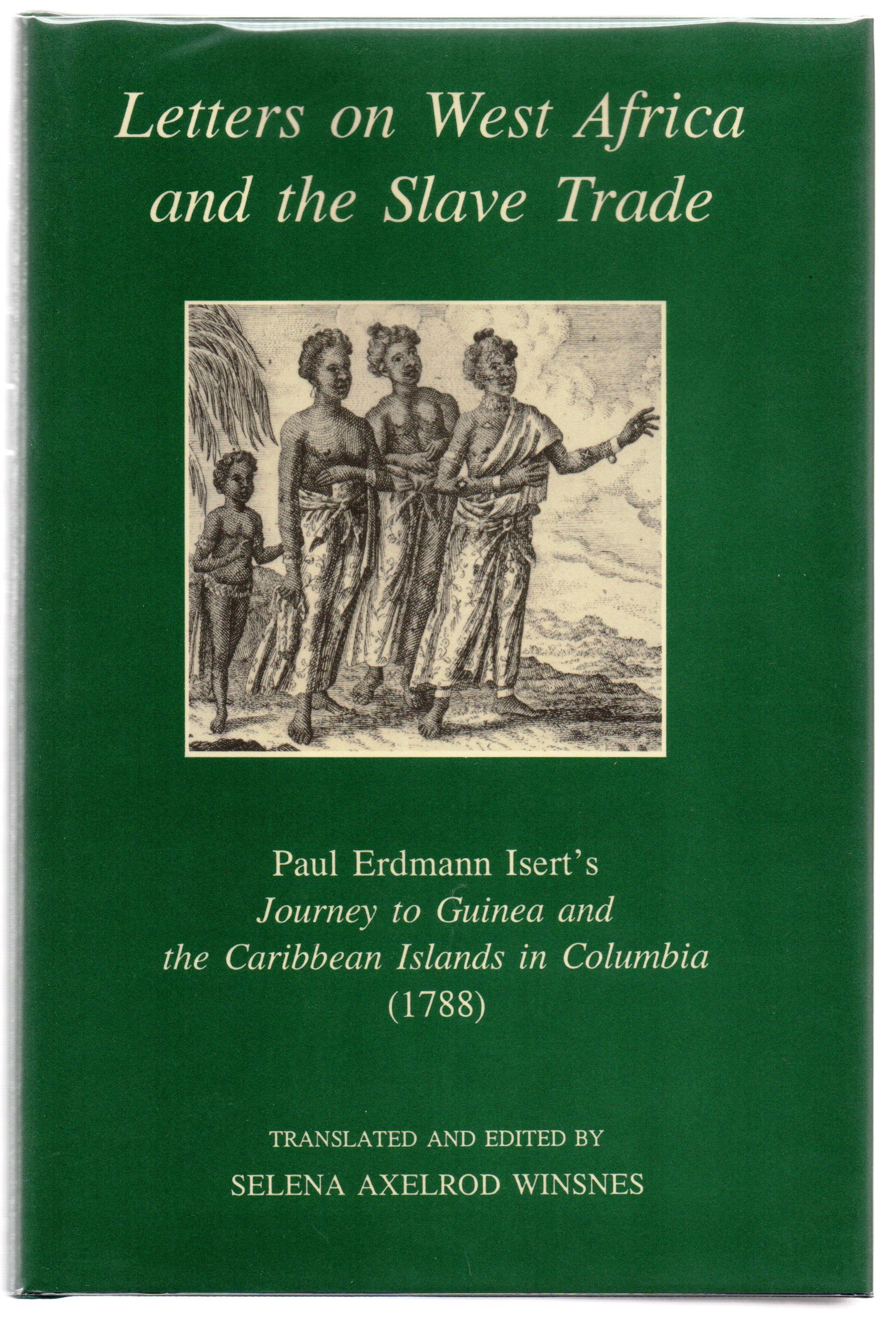
Comprehensive Summary of Letters on West Africa and the Slave Trade by Paul Erdmann Isert (1788)
Explore Paul Erdmann Isert’s Letters on West Africa and the Slave Trade (1788) with a chapter-by-chapter summary, historical, economic, and sociopolitical analysis, key excerpts, and connections to modern global issues like labor exploitation and fairtrade.
Highlights:
-
Chapter-by-Chapter Summary (based on Isert’s letters)
-
Thematic Summaries (historical, economic, sociopolitical analysis)
-
Excerpts & Page Anchors (from the uploaded book)
-
Connections to Contemporary Issues
-
Implementable Takeaways
-
Topics for Further Exploration
-
Bibliography & SEO Metadata
Why Is This Text So Important
" Isert’s book, in the form of 12 long letters evidently written for publication, has excited great interest ever since their publication in 1788. Written in German, not P.E. Isert’s native Danish, the work has long been regarded as a key tool in understanding Danish involvement with the West Africa trade and the establishment of a flourishing Danish West Indian colony (now the American Virgin Islands). This is the first translation from German to English.
Isert is of interest because he approached his subjects in a scientific and scholarly way: a child of the Enlightenment he was an active botanist and physician, and he became a gifted amateur ethnologist after his arrival in Accra. In start contrast to many of his contemporary European colleagues, he showed a great sympathy, interest and respect for Africans and their customs and beliefs. He also was fascinated by the material culture around him and left excellent descriptions of customs, clothing, martial arts, music and recreation. Isert also tried to create a large plantation in Ghana to counteract the slave trade. His descriptions of Danish and French plantation life and plantation methods in the late 18th c round out this indispensable book.
Source: https://www.academicapress.com/node/178
Here is a comprehensive expert summary of Letters on West Africa and the Slave Trade: Paul Erdmann Isert’s Journey to Guinea and the Caribbean Islands in Columbia (1788), edited and translated by Selena Axelrod Winsnes.
I’ve structured it into:
-
Chapter-by-Chapter Summary (based on Isert’s letters)
-
Thematic Summaries (historical, economic, sociopolitical analysis)
-
Excerpts & Page Anchors (from the uploaded book)
-
Connections to Contemporary Issues
-
Implementable Takeaways
-
Topics for Further Exploration
-
Bibliography & SEO Metadata
Chapter-by-Chapter Summary
Preface (p. 1–2)
-
Isert frames his work as a “holy obligation” to record African customs before they vanish, comparing Africans to lost civilizations like the Aztecs and Incase.
-
His purpose: not only natural science, but also preserving ethnography and exposing European corruption in Africa.
First Letter: Guinea (10 Nov 1783, pp. 1–21)
-
Voyage from Copenhagen to the Gold Coast.
-
Detailed observations of sea life (sharks, jellyfish, porpoises, flying fish) and sailor rituals crossing the Tropic of Cancer.
-
Arrival at Cape Three Points.
-
Reflects Enlightenment curiosity and early ethnography.
Second Letter: Guinea (29 Dec 1783, pp. 21–44)
-
First land journey from Christiansborg to Rio Volta.
-
Encounters with African communities, their settlements, trade, and camp life.
Third–Fifth Letters: War Accounts (1784, pp. 45–112)
-
Third Letter (8 Apr 1784): War with the Anlo-Ewe (Sagbadre War). A Black commander chosen as Field Marshal – shows African agency in warfare.
-
Fourth Letter (22 Jun 1784): Battles at Pottebra and Fida. Notes courage of “Mountain Blacks.”
-
Fifth Letter (22 Jun 1784): Peace settlements; construction of Fort Prinzenstein at Keta to expand Danish trade.
Sixth Letter: Rio Volta (24 Sep 1784, pp. 113–130)
-
Scientific description of flora and fauna around the Volta.
-
Notes on African trade systems and local economies.
Seventh Letter: Journey to Fida & Dahomey (28 Mar 1785, pp. 131–181)
-
Visits Fort Prinzenstein, Popo, and Dahomey.
-
Describes Dahomean kingship, rituals, and trade practices.
Eighth Letter: The Akras (16 Oct 1785, pp. 182–246)
-
Ethnographic study of the Ga-Adangbe (“Akras”).
-
Language, religion, clothing, medicine, and occupations.
-
Notes illnesses, including smallpox, yaws, and fevers.
Ninth Letter: European Influence (20 Apr 1786, pp. 247–272)
-
History of European arrival on the coast.
-
Harsh critique of Europeans’ corruption, gluttony, and role in destabilizing African societies.
-
Observes African illnesses linked to European trade and alcohol.
Tenth Letter: Akuapem Journey (10 Aug 1786, pp. 273–304)
-
Inland travel to Akuapem hills.
-
Describes Asante diplomatic invitation, but journey aborted.
-
Highlights fertility of the land and differences from the coast.
Eleventh Letter: Slave Ship & Revolt (12 Mar 1787, pp. 305–340)
-
Voyage from Africa to St. Croix with slaves.
-
Witnesses a slave revolt onboard targeting him (mistaken as slave owner).
-
First-hand account of brutality and dehumanization.
-
Disillusionment with slave trade intensifies.
Twelfth Letter: West Indies (10 Jul 1787, pp. 341–end)
-
Visits St. Thomas, St. John, Guadeloupe, and Martinique.
-
Witnesses slave auctions and plantation brutality.
-
Conceives reform idea: plantations in Africa producing the same crops to end the Middle Passage.
Thematic Summaries
Historical Analysis
-
Danish Expansion (1780s): Benefited temporarily from British/Dutch wars, building forts (Prinsenstein, Kongensten, Augustaborg)
-
Sagbadre War (1784): Anlo-Ewe defeated with Danish-Adangbe alliance, enabling fort-building and trade expansion.
-
Frederiksnopel Colony (1788–1789): Isert’s utopian project in Akuapem to cultivate sugar and cotton with African labor locally instead of shipping slaves. Failed after his death in 1789.
Economic Analysis
-
Slave trade described as central to Danish and European profits.
-
Forts like Christiansborg and Prinzenstein acted as economic hubs.
-
Isert’s reform scheme = proto-development model: keep African labor in Africa, export crops directly.
-
Highlights early critique of trans-Atlantic slavery as economically unsustainable.
Sociopolitical Analysis
-
African Agency: Africans choose their own Field Marshals, wage wars, and negotiate alliances.
-
Critique of Europeans: Described as drunken, corrupt, and exploitative.
-
Religion: Respect for African systems except fetish priests, whom he saw as exploitative.
-
Race Theory: Argues African intelligence equal to Europeans, rejecting pseudo-scientific racism.
Key Excerpts (with Pages)
-
Preface: “It ought to be a holy obligation for every historical author to preserve the manners and customs of savage nations.” (p. 1–2)
On Europeans: “Lascivious, gluttonous inebriates … men of little merit.” (p. 20)
On Africans: “The intelligence of the Black … is at least equal to that of the European.” (p. 23)
On Slave Trade: “I believed slaves were put to work as ordinary field hands … I was badly shaken by the revelation.” (p. 16–17)
Connections to Contemporary Global Issues
-
Global Labor Exploitation: Isert’s critiques echo in today’s debates on sweatshops, migrant worker abuse, and forced labor supply chains.
-
Fairtrade & Local Value Addition: His idea of cultivating cash crops in Africa instead of exporting labor parallels fairtrade cocoa/coffee initiatives today.
-
Climate & Health: Observations on tropical disease link to current global health inequalities and climate-sensitive diseases.
-
Colonial Legacy: Danish and European forts in Ghana mirror current discussions about restitution and memorialization of slavery.
Implementable Takeaways
-
Business/Economic: Prioritize value-addition at the source (e.g., Africa producing finished cocoa/chocolate, not just raw beans).
-
Policy: Strengthen local labor protections to avoid modern slavery in supply chains.
-
Education: Use Isert’s comparative ethnography model—objective, less Eurocentric—as a method in cross-cultural research.
-
Personal/Professional: Adopt Isert’s habit of observing with curiosity but also self-criticism—recognize biases when studying other societies.
Table: Key Concepts
| Theme | Isert’s Observation | Modern Parallel |
|---|---|---|
| Slave Trade | Brutality on ships; revolt; plantation cruelty | Human trafficking, migrant labor abuses |
| European Conduct | Corruption, drunkenness | Corruption in international aid, corporate exploitation |
| African Agency | Military leaders, kings, rituals | Postcolonial sovereignty, grassroots governance |
| Economic Reform | African plantations instead of Middle Passage | Fairtrade, local processing industries |
| Race & Science | Equality of intelligence, rejection of racist pseudo-science | Anti-racism, decolonizing knowledge |
Topics for Further Exploration
-
Enlightenment science & colonial ethnography
-
The Danish role in the trans-Atlantic slave trade
-
Comparative history: Isert vs. Olaudah Equiano’s narrative
-
Slave revolts as resistance history
-
Early critiques of capitalism in colonial settings
-
Botanical history: Isert’s contributions to African plant taxonomy
-
The rise and fall of “utopian colonies” in Africa
Bibliographic Section
(All excerpts cited from Letters on West Africa and the Slave Trade, ed. Selena Axelrod Winsnes, Sub-Saharan Publishers, 2007)
-
Preface, pp. 1–2
-
Editor’s Intro: European corruption & African agency, pp. 15–23
-
Biography of Isert & West Indies reflections, pp. 16–18
-
Critique of Europeans: p. 20
-
Race and Intelligence: p. 23
Metadata
Title: Comprehensive Summary of Letters on West Africa and the Slave Trade by Paul Erdmann Isert (1788)
Meta Description: Explore Paul Erdmann Isert’s Letters on West Africa and the Slave Trade (1788) with a chapter-by-chapter summary, historical, economic, and sociopolitical analysis, key excerpts, and connections to modern global issues like labor exploitation and fairtrade.
Keywords: Paul Erdmann Isert, Letters on West Africa, slave trade history, Danish colonialism, Gold Coast, African ethnography, Dahomey, trans-Atlantic slavery, Frederiksnopel colony, fairtrade history.

